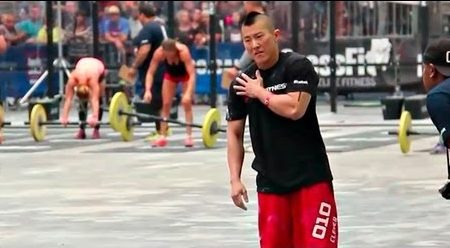Synkinesis is a condition in which the patient experiences the unintended movement of facial muscles and other voluntary facial expressions. Facial synkinesis is caused by facial nerve injury. It is also a common consequence in patients who have suffered Bell’s palsy.
Read on to learn more about synkinesis and how it is treated effectively.
What Factors Cause the Condition?
- Synkinesis may occur in anyone with a history of facial nerve paralysis. If you are recovering from facial paralysis, you may experience involuntary linking of muscle movements in your face.
- The condition is a result of the trauma experienced by the facial nerve. The trauma may be due to injury or inflammation of the facial nerve. The facial nerve is also affected by certain viral infections like Ramsay Hunt Syndrome.
- The condition may also result from facial nerve injury caused by brain tumor surgery, salivary gland tumor removal, etc.
How Is The Condition Diagnosed?
The symptoms are assessed visually. For instance, when you blink your eyes, one side of your mouth may pull up. Your eyes may close involuntarily when you chew.
Your doctor conducts a thorough physical examination to confirm the symptoms. Then, your medical history is examined. If the symptoms are subtle, the doctor may document the symptoms with videos or photographs.
Types of Synkinesis
Facial synkinesis types are classified based on the affected muscle groups. The categories include,
1) Oral Ocular Synkinesis
Oral movements like chewing, smiling, etc., are accompanied by involuntary eye contraction on the affected side.
2) Ocular Oral Synkinesis
When you blink your eyes or lift your eyebrows voluntarily, there is the involuntary lifting of the corners of the mouth.
3) Midfacial
Some patients may experience pain in the cheeks or the presence of a deep crease at the nasolabial fold when at rest or while moving the affected cheeks.
4) Platysma
While speaking or smiling, the neck muscles tend to tighten. The corners of the mouth are pulled downwards.
5) Mentalis
A deep crease may occur on the chin during eye or oral movements.
Best Treatment Methods
There are many ways to treat facial synkinesis and restore balance to facial muscles. It is important to note that every patient is different and may benefit from different treatment regimes. Often, experts recommend a multidisciplinary approach for quicker and better results. Some of the best ways to treat synkinesis are listed below.
1) Neuromuscular Retraining
Neuromuscular retraining or physical therapy is the primary approach to treat the condition. The therapy programs are effective for all patients recovering from different causes of facial paralysis and have developed synkinesis.
The approach uses facial nerve recovery exercises to regain the balance of facial muscles. The treatment plan requires the effort and time of the patient. When done right, the approach is highly effective for all patients.
Your neuromuscular therapist can train you to perform the exercises and coordinate facial movements effectively. Sometimes, mechanical stimulation or massage is recommended, along with neuromuscular retraining.
The key benefits of the approach are reconnection of facial muscles to the brain and suppressing unwanted muscle movements in the face.
2) Selective Neurolysis Surgery
Selective neurolysis or selective neurectomy is an advanced surgical procedure. The approach involves treating the abnormal regeneration of the facial nerve. The results, obtained through correction of facial nerve wiring and facial reanimation surgery, are extraordinary.
The procedure is generally recommended for cases that have not shown significant progress with neuromuscular retraining. The surgery yields quick results and involves minimal risks compared to similar procedures.
3) Injection of Botulinum Toxin
Chemo denervation using botulinum toxin (also called Botox) is a standard treatment for patients suffering from synkinesis and Bell’s palsy. The botulinum toxin yields the protein called Botox. When injected into the affected muscle, the Botox relaxes the muscles and reduces involuntary movement. It restores symmetry and reduces hyperactivity of the muscles.
The facial paralysis expert may also inject the protein to the normal side if it seems overreactive. Involuntary closing of the eyes while smiling or chewing, pulling up the mouth corners while blinking, and tightening of neck muscles while smiling are some of the synkinesis symptoms that are resolved through Botox injections. Botox is 100% safe and effective for treating synkinesis.
Synkinesis is treated through other options such as eyelid surgery, facelifts, etc. Talk to your facial paralysis expert to determine the most appropriate treatment approach for your case.
If you experience any symptom of synkinesis, it is best to take medical help without delay. Facial paralysis experts will analyze your unique requirements and suggest an ideal treatment plan for your quick recovery.



















Follow Us